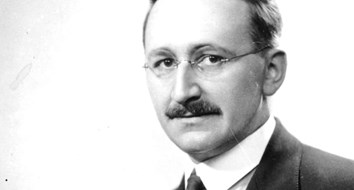Download:
Introduction
Money is a middleman, a medium of exchange. You trade a good or a service for it not because you intend to consume it (unless you’re a numismatist) but because you want to pass it on in exchange for what you’re really after.
That’s why a restaurant may frame its first earned dollar and hang it on the wall, but it happily parts with every dollar it earns thereafter. Because it’s at least one side of every transaction—and both sides in the case of purchasing one currency with another—whatever affects money will affect virtually everything else in the modern marketplace.
Get it right, and money can grease the wheels of a prosperous economy. Get it wrong, and it becomes the poison that ruins the soup.
As a policy issue, money ranks high in importance in American history. Rare is the decade in the country’s nearly 250 years that it wasn’t at the center of critical national debates.
A year before the Declaration of Independence, the Second Continental Congress began wrestling with how to pay for a war against Britain. It printed paper money until it became nearly worthless.
Later, the new federal government attempted a policy of bimetallism by which gold and silver would circulate together as the nation’s media of exchange. Most of the time, however, one metal drove the other overseas or into other, non-monetary uses. Americans had silver coins in their pockets at the time of the War of 1812 but gold coins by the time of the Mexican War in the 1840s.
During the Civil War, payment in precious metals was suspended so both sides could crank up the printing presses again. The result was serious price inflation in the North and complete monetary destruction in the South.
Great political battles over money raged from the Civil War’s end until the turn of the century. What was best for the country as money? Gold? Silver? Fiat paper? Or some combination? In 1900, the matter was settled in favor of gold, but not for long. The establishment of the Federal Reserve System in 1913 helped put the country on a path to the irredeemable fiat money we use today.
The history of money in America is nothing if not colorful and controversial. Today, we argue widely about monetary policy, the role of digital currencies, and over whether the dollar can retain in the future its historic role as the world’s pre-eminent reserve currency. Where American money is headed tomorrow is yet to be determined, but perhaps its future can be better understood if we learn more about its past.
This collection of essays previously published by the Foundation for Economic Education offers a glimpse into American monetary history from the Pine Tree Shilling of colonial days to the Federal Reserve notes of now. When you’ve finished the 24th and final essay, you’ll see clearly that its forms and follies are inseparable from the story of our economic history.
—Lawrence W. Reed
President
Foundation for Economic Education
Atlanta, GA
February 2019





